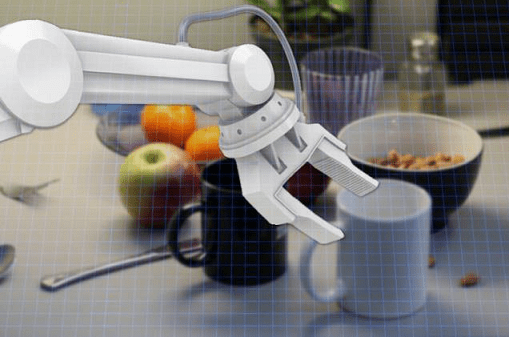MIT's New Algorithm To Make Your Dream Of Having Household Robot Come True
Object recognition is one of the many challenging and widely studied areas in artificial intelligence. Even the best object detectors sometimes fail to recognize objects. In order to build an efficient household robot for practical purposes, researchers need to develop a software or an algorithm that will help the robot in imaging objects from different perspectives before making judgments about their identity. A research team from Computer Science and Artificial Intelligence Laboratory of MIT has built an algorithm that will make object recognition easier for household robots.

The new algorithm aggregates multiple perspectives that help the system to recognize four times more objects as compared to a single perspective. This minimizes the number of misidentifications. The algorithm works ten times faster and its accuracy will help to deploy household robots in real time environment. Lawson Wong, a graduate student in electrical engineering and computer science and lead author of the research paper, and his thesis advisors worked on scenarios in which they considered about 20 to 30 distinct images of household objects. These images were grouped together on a table. But, in most of the scenarios, the clusters of different instances of a particular entity were placed closely to each other. This made the process of matching multiple, different perspectives more arduous.
By going through each pair of successive images, the algorithm creates more than one hypothesis. The hypotheses generated are about the objects in one image that corresponds to the objects in other image. Whenever a new perspective is introduced, the number of hypotheses increases. The topmost hypothesis at each step is kept as it is while the others are discarded in order to reduce calculations. However, this task was time-consuming.
To make their algorithm more efficient, the researchers tried another approach where they neither discarded hypotheses nor canvassed them. Instead, the algorithm samples from the hypotheses randomly. As there is a considerable overlapping between different hypotheses, an adequate number of random samples can produce consensus on the correspondences between the objects in any two images that are recognized successively.
The research paper will be published in International Journal of Robotics Research.
Source: #-Link-Snipped-#
The new algorithm aggregates multiple perspectives that help the system to recognize four times more objects as compared to a single perspective. This minimizes the number of misidentifications. The algorithm works ten times faster and its accuracy will help to deploy household robots in real time environment. Lawson Wong, a graduate student in electrical engineering and computer science and lead author of the research paper, and his thesis advisors worked on scenarios in which they considered about 20 to 30 distinct images of household objects. These images were grouped together on a table. But, in most of the scenarios, the clusters of different instances of a particular entity were placed closely to each other. This made the process of matching multiple, different perspectives more arduous.
By going through each pair of successive images, the algorithm creates more than one hypothesis. The hypotheses generated are about the objects in one image that corresponds to the objects in other image. Whenever a new perspective is introduced, the number of hypotheses increases. The topmost hypothesis at each step is kept as it is while the others are discarded in order to reduce calculations. However, this task was time-consuming.
To make their algorithm more efficient, the researchers tried another approach where they neither discarded hypotheses nor canvassed them. Instead, the algorithm samples from the hypotheses randomly. As there is a considerable overlapping between different hypotheses, an adequate number of random samples can produce consensus on the correspondences between the objects in any two images that are recognized successively.
The research paper will be published in International Journal of Robotics Research.
Source: #-Link-Snipped-#
0
